When Britt left for Germany I was left alone in Banda Aceh. A little reminder: Britt had to fly back to Germany to finalize university registration and wanted to come back to South East Asia after one week. I (Alex) was left alone in Banda Aceh with 7 days to myself.
There were still so many things we wanted to see initially in Sumatra and one week was not enough, considering that one has to travel vast distances between the points of interest we picked. So I had to decide what to do.Our change of plans came rather suddenly because of Britt’s departure. So I spent the first days undecided staying in Banda Aceh, which was interesting…
At this point it is worth it to paint a better picture of the province of Aceh and to share what made this place so interesting.
The capital Aceh, Banda Aceh was for a long time the main port for pilgrimage towards Mecca in the region. From here Islam spread to Indonesia. It still is a Muslim dominated province with 97% of the population being Muslim, living in accordance with Sharia laws.
Even now Aceh is considered far more strict and conservative than the other provinces in Indonesia. Given this cultural difference and a great deal of natural resources that had been exploited, with locals taking only little share of it, there was a strive and a fight for independence between the Free Aceh Movement and the Indonesian government. This movement stopped tourism in the area until 2005 – the conflict ended after the Boxing Day Tsunami. In the town of Banda Aceh alone over 25.000 lives were claimed (more than 1 out of 10 people living there). Indonesia and the state of Aceh were affected the most by the Boxing Day Tsunami. There are major memorials and museums reminding us of this catastrophe. In the following years NGOs helping to rebuilt the area helped the economy to grow. The presence of many foreign workers also stimulated the economy. The time of NGOs in Aceh is apparently over and in the capital, Banda Aceh, I did not see any other Western visitors. Pulau Weh was a different story. It appears in many guide books as one of the top destinations. But hardly anyone stays in Banda Aceh. To me it was an authentic place, absolutely unspoiled by tourism.
I stayed in Eddies guesthouse, about 30 minutes by scooter from the center. I was really glad that I chose Eddie’s. From what I have seen, it was the most happening place by far with all the other accommodations being literally empty. Eddie’s was close to the beach which is a popular surfing spot. When I was there it was not the surfing season, with strong winds attracting only a couple of kite surfers (all stayed at Eddie’s). So at least in this place there was some company in the evenings. During the day I did not encounter other tourists on the beach other than the kite surfers. There was not much to do for me I found. I stayed for two days exploring the town, beaches, jungle and cafes by scooter. I looked into doing a surfing course but it was rather too expensive and the only instructor already had students to fill his day.

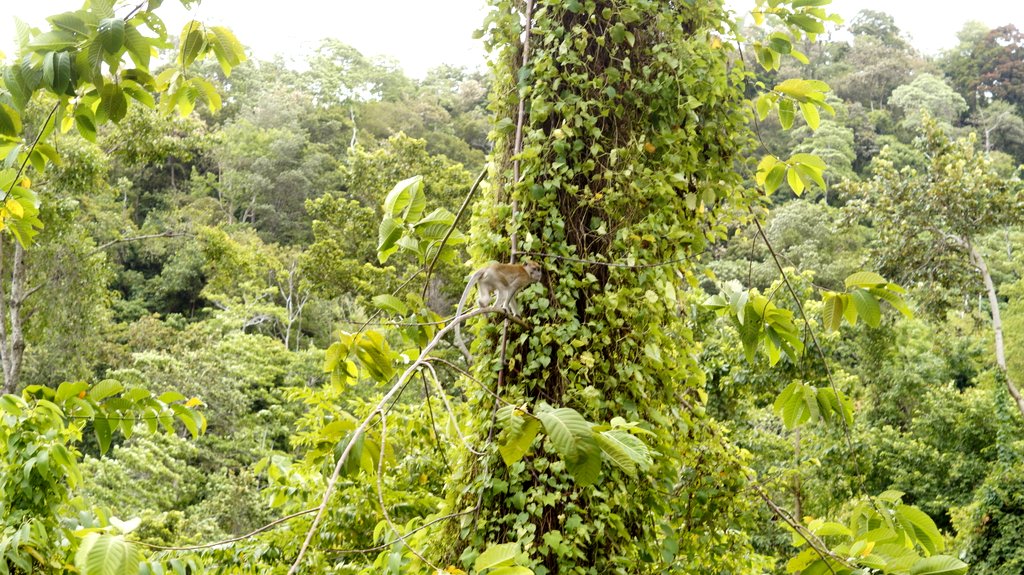
The local culture was quite a bit different from other places I have visited. There was this comfortable feeling of safety I had throughout the time. The people I have talked to or asked for help/ directions were extremely helpful. Nothing was overpriced for me as a tourist. I encountered no touts at all. At one point I wanted to buy avocados in the local market and the merchant tried to explain, that I should not buy them, because they are all not so ripe, and gave me something else for free. Crazy, huh?!
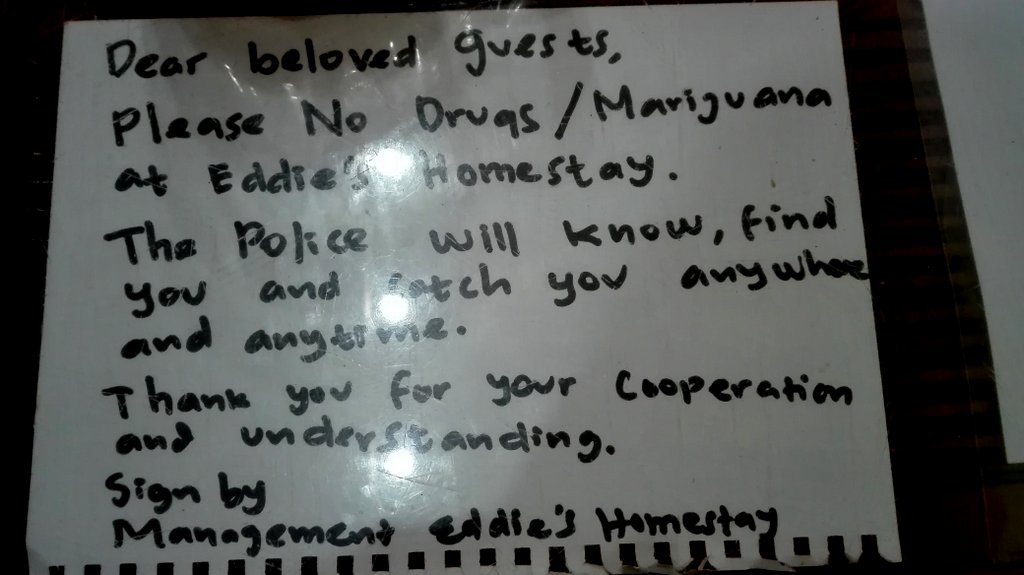
Also in the guesthouse nobody bothered to lock the rooms. I recall once, there was one laptop and some other valuables lying on the floor of one room, door to the room was open, nobody around. So one could walk from the street on the property, take all the stuff and walk out again and nobody around would have even noticed. But nobody did so. Maybe because the people were honest, but maybe because of sharia law which is brutal when it comes to some crimes like theft, drugs or premarital sex. Even for alcohol there were apparently no legal distribution channels. As a tourist one could get a beer here and there (served by hotels, acquired on the black market), but for a local no way. Also girls in bikinis would not be served in many beach bars before they covered up appropriately.

Without Britt and a lack of other tourists I had to go local 🙂 and managed to pick up some Indonesian words (the language has some similarities to dutch and at least the same alphabet which makes things easier).
I wanted to see more of Sumatra and decided to depart towards Toba Lake.
Toba Lake and Samosir Island
The main reason for me to go here was to see the dimensions of the super volcano. The gigantic lake is about 100 km long which basically fills up the caldera of a super vulcano. The last eruption is dated around 75000 years ago and is supposed to have been the trigger of a little ice age on the planet. It caused a bottle neck of human population numbers. I just wanted to see the dimensions of the caldera with my bare eyes and indeed it is hard to grasp since you cannot even see the whole lake from the ground but from space.I did not go to space but decided to stay on Samosir Island on the lake in a touristy town called Tuktuk.
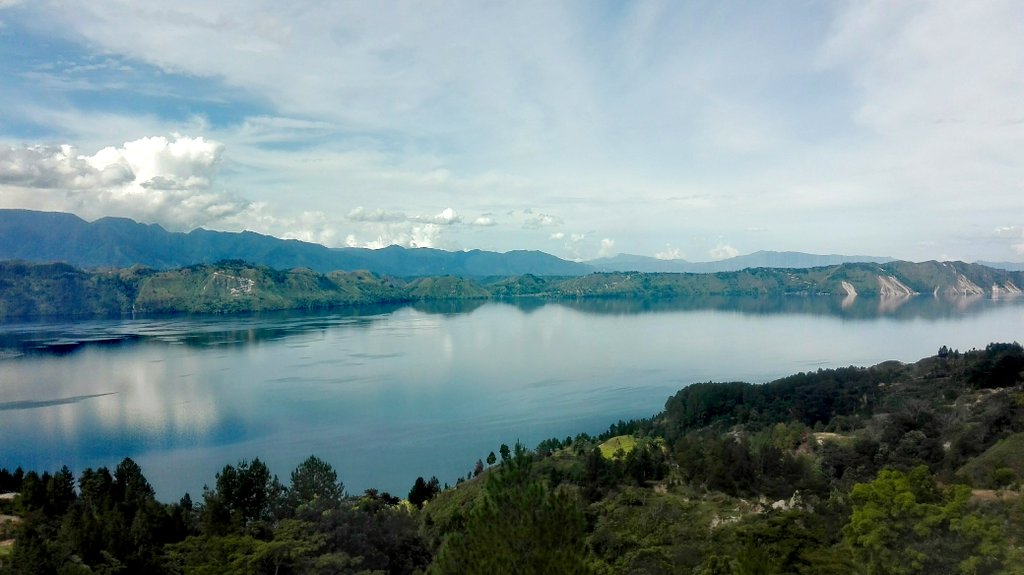
Tuktuk was a nice place, with many lakeview resorts, good restaurants and a couple of bars (some even selling magic mushrooms, which was a surprise after coming from strict Aceh).
Apart of some other travellers that made my day I found the place a little too quiet. I believe it is due to a ferry boat accident that claimed almost 200 lives about one month before I arrived. The ferry, connecting the island on this lake with the mainland, sunk during a storm on the lake. Maybe that is why there were less tourists. The island itself can be explored best by scooter. It takes around 6 hours to drive completely around. There is even an indigenous population with a distinct culture. One more thing worth mentioning: I have seen a snake. I realized it too late and it crawled even over my leg. And the crazy thing: On the island there are no snakes! The locals said they have never seen one there before. Lucky me!
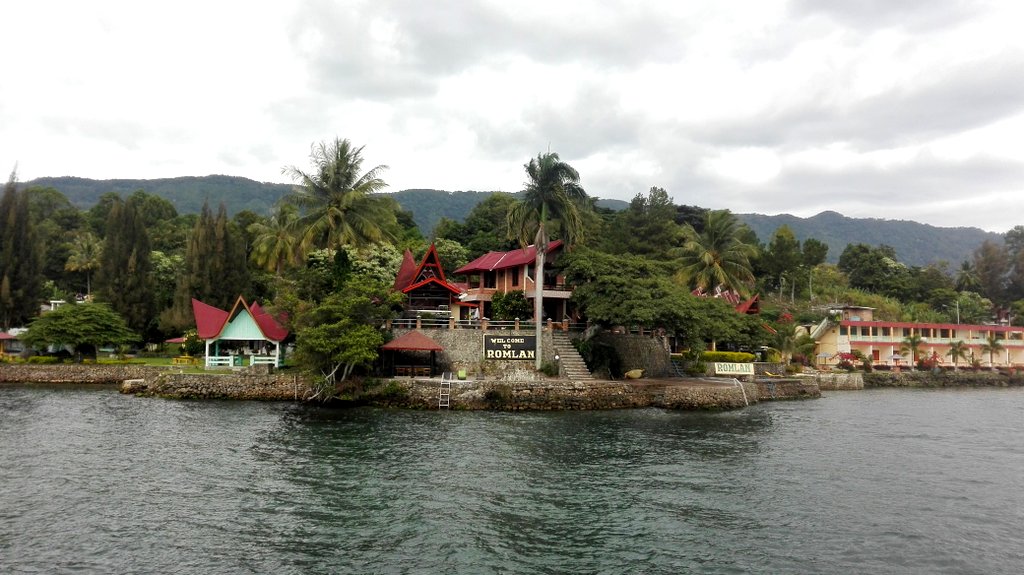
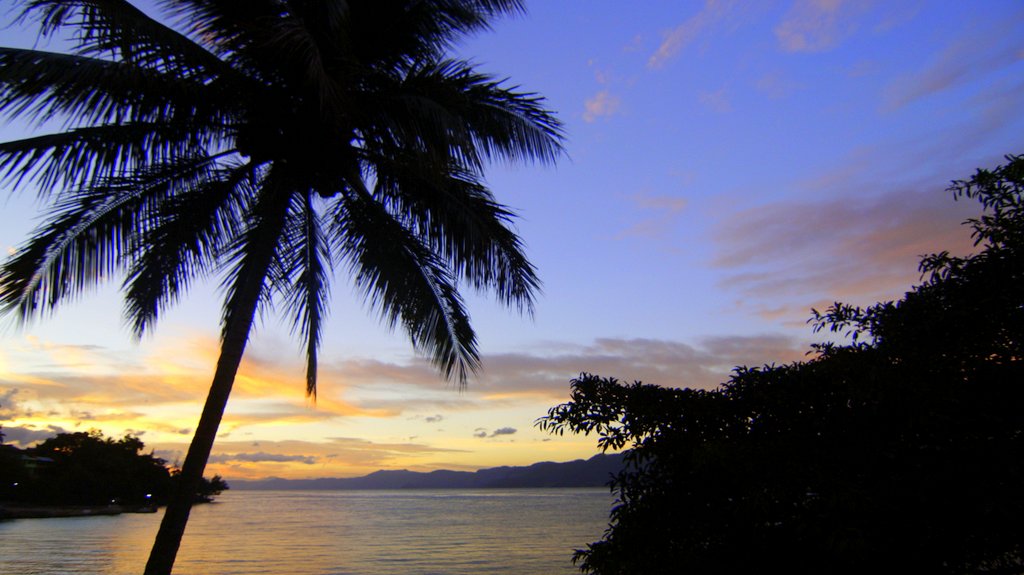
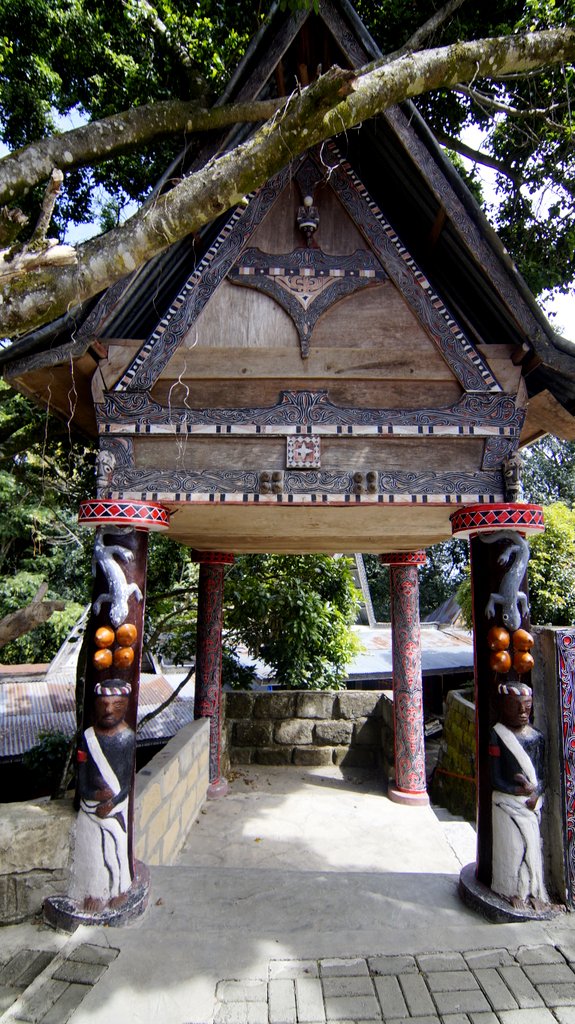
Meanwhile in Germany
Meanwhile, while Alex was enjoying paradise, I, Britt had to make an unexpected five day trip to Germany just to submit some boring paperwork. At first I wasn’t looking forward to this excursion at all. I missed all of this wild sumatra experience that Alex got to enjoy. Despite my bad attitude, Germany turned out to be not bad at all. I was lucky enough to see some well missed friends and flatmates. Catching those German summer vibes, drinking Kölsch and barbecuing really enhanced the experience. Everything worked out just fine concerning my university paperwork. After five days I started my long journey back to Asia for our wedding anniversary.
One more thing worth mentioning for me: I bumped into Steve Chao, again! This time checking in to a flight with Singapore Airlines.
One more Stop in Sumatra & Spotting the Jungle Humans
While Britt was already heading towards the airport I still wanted to check out one thing that Sumatra is really famous for. Sumatra is known for wild jungles and wildlife. And it is one of the only two places in the world to spot wild orangutans. Orangutans translates into jungle human or rather human from the jungle, so I was told. Anyways, those I wanted to see. Other travellers told me, to see orangutans there are two places in Sumatra to go: Ketambe or Bukit Lawang. The more authentic jungle experience with far less tourists is in Ketambe but the more happening place, which is also closer to the airport, is Bukit Lawang. In both one could spot orangutans apparently even on day treks.
To get at least a glimpse of the orangutans and not get too far away from the airport I headed north again to the village of Bukit Lawang. This place was recommended by many travellers. The journey by minivan from Tuktuk took almost the entire day. The van slowly descended from the cooler elevations of Toba Lake back down to the hot Sumatran climate. The last three hours of the drive we were just passing through palm oil plantations. I know they are bad BUT they are also kind of pretty. Some palm oil plantations have high palms that cover the sky and the trunks, all straight like pillars. It is pillars as far as one can see, until they disappear in the dark shades created by the palm crowns. It looked like an infinite hall. And yes they are bad! But actually the palm oil plantations are just a matter of fact, a response to demand for Nutella & Co.. I highly recommend to come and visit the palm oil plantations before they disappear due to changing consumer habits. 🙂 Okay, we have plenty of time to see them.
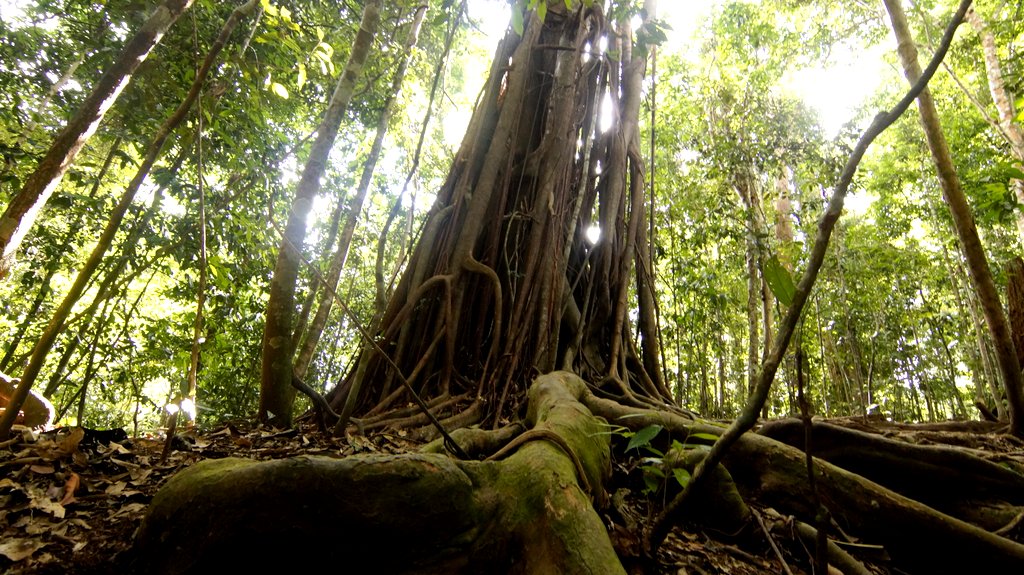
Anyways the trip was worth it after crossing the wide border of palm oil the last stop was the village of Bukit Lawang. Here the plantations ended and the jungle started. Not only being the last stop before the jungle, a great gateway to do jungle trekking and to spot orangutans, the village itself had also a great vibe. There were relaxed, affordable accommodations, with friendly local staff, little to no traffic and many travellers who inspired by the vibe decided to change their itineraries just to stay a little longer.
I had little time since I had an appointment with Britt that I did not want to miss in Kuala Lumpur. I signed up for a one day trek. That was rather expensive (food was cheap, accommodation was super cheap, but the trek was expensive with 45 EUR for one day!). Most people stay overnight. Those cost around 80 EUR for two days, 120 for three days per person (!). Anyways, also that was worth it. On the one day trek you do not get really deep enough into the jungle to get rid of the other trekking groups. So the group I was part of frequently bumped into other trekkers who walked the little paths that zig-zagged up and down through the jungle. Despite this not so remote experience, my group spotted many wild and semi-wild orangutans. At the end of the day we had 6 encounters with a total of 12 orangutans.
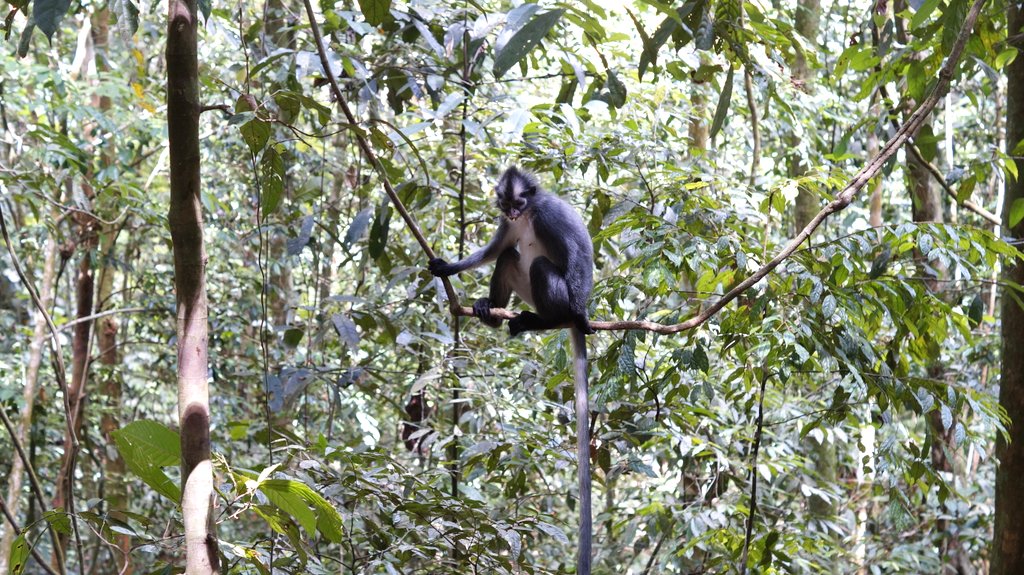
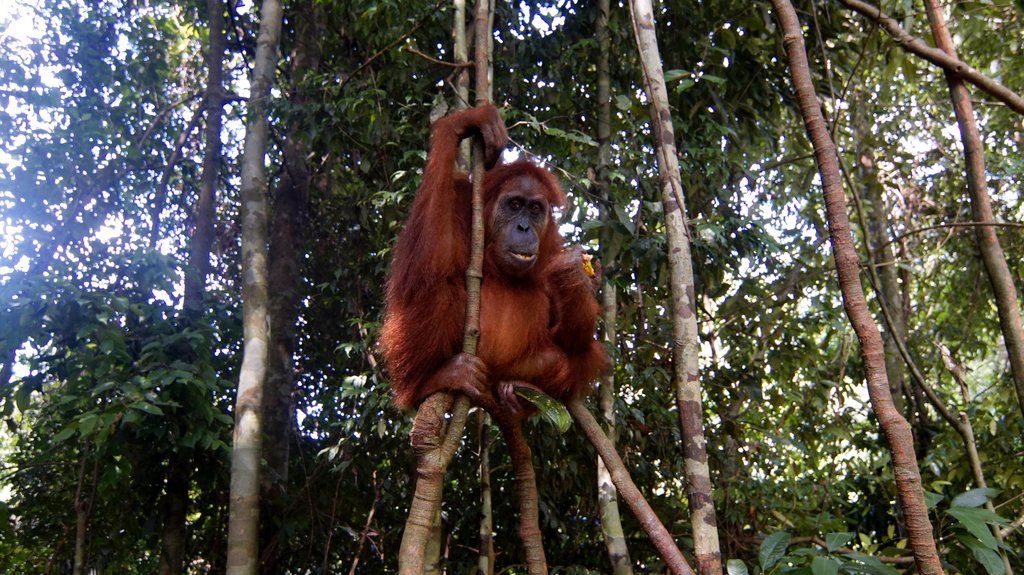
To get it clear: Semi-wild meant that the animals have been in captivity and released back into jungle after receiving some training on how to survive without humans feeding them. The semi-wild orangutans have no or just little fear of humans and come rather close. The local guides can recognise them and each has a different name (I mean the orangutans). The semi-wild orangutans also come down from their trees because they eat fruit leftovers from the tourists, which is also bad. Completely wild orangutans stay in their nests or move through the trees and do not come close to humans or down to stay safe from the tigers. Those do not give us such great pictures though. I have seen also some guides attracting the orangutans with fruits. Not good.
It seems like a strange dependency though: If the orangutans are completely protected from tourist influence and everyone sticks to it (no food leftovers, no guides feeding them with fruits), I can imagine that the animals would be much harder to spot and less people would come. Thus the locals would have to make up for the loss of tourism dollar by more palm oil plantations or rubber tree plantations. Just a thought.
Just to catch up on the overall tone of this post: There was also a catastrophe in Bukit Lawang in 2003, when a giant, some 20m high flood wave (not tsunami because it is far from the sea) suddenly rushed through the canyon and killed over 200 people in the village. According to wikipedia it was due to illegal logging. I have the feeling I travelled only to spots of catastrophes in Sumatra.
After only two days in a place well worth visiting longer (next time) I left to Medan to catch the flight to Kuala Lumpur to meet Britt again.
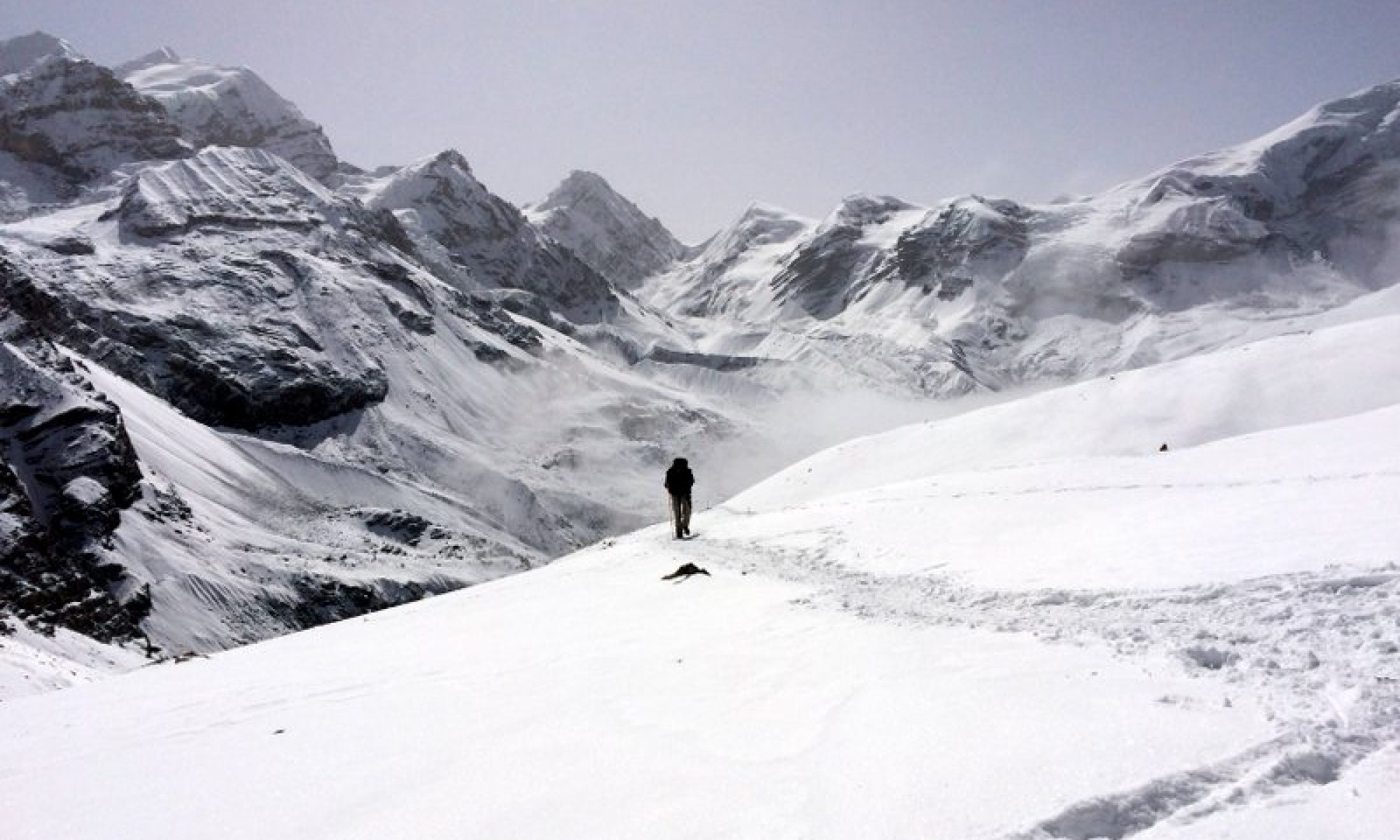
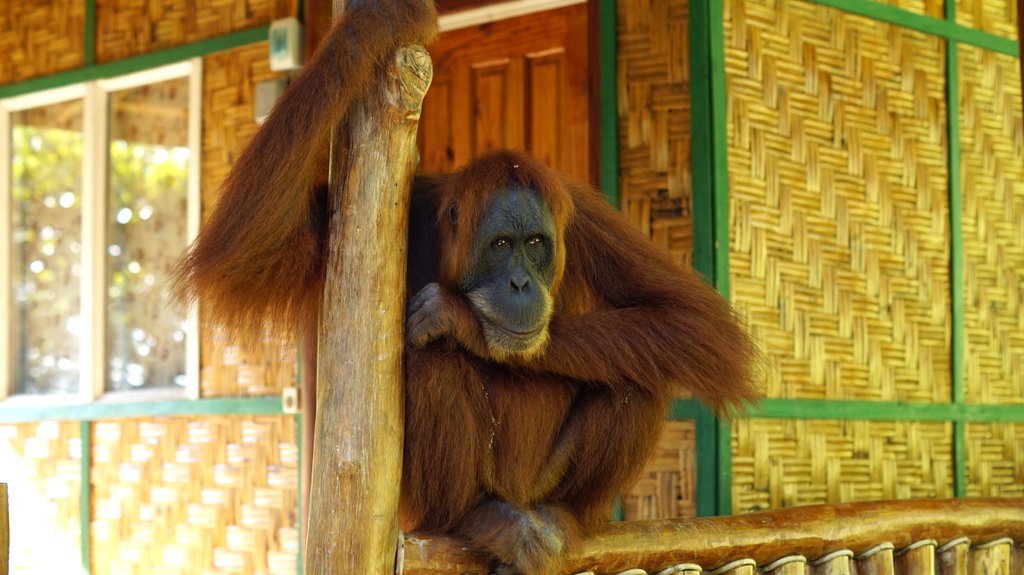

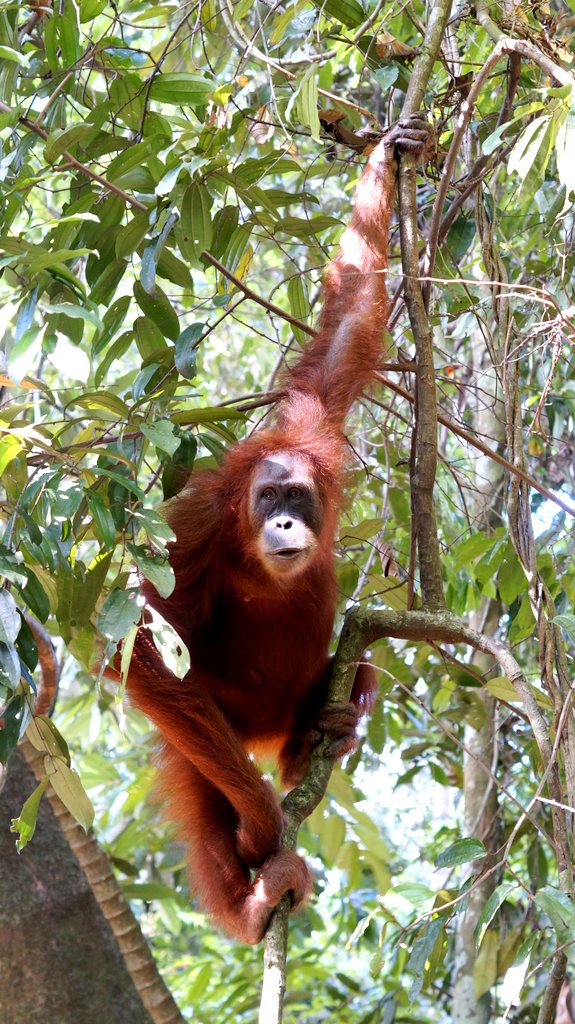
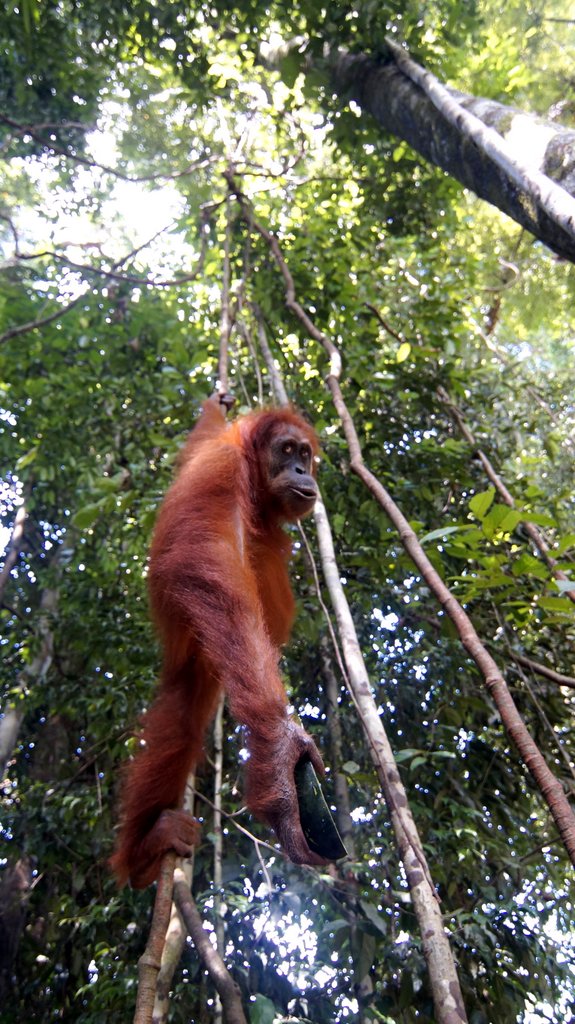
One Reply to “Alex alone in North Sumatra and Britt’s short trip to Germany”